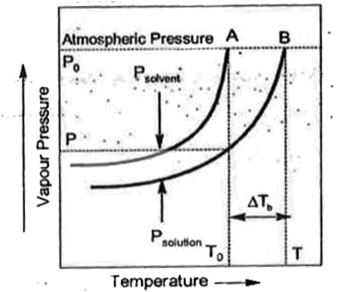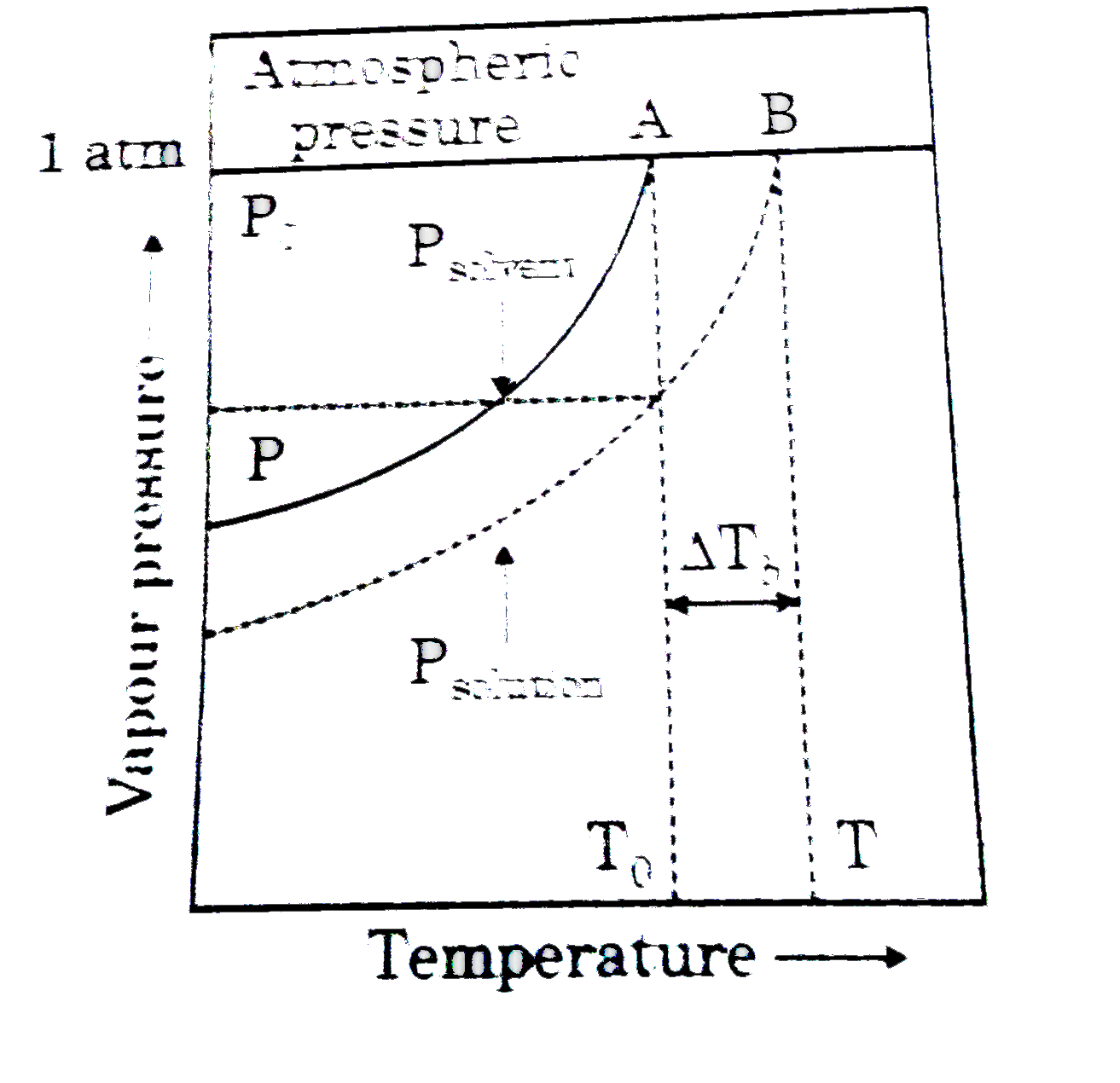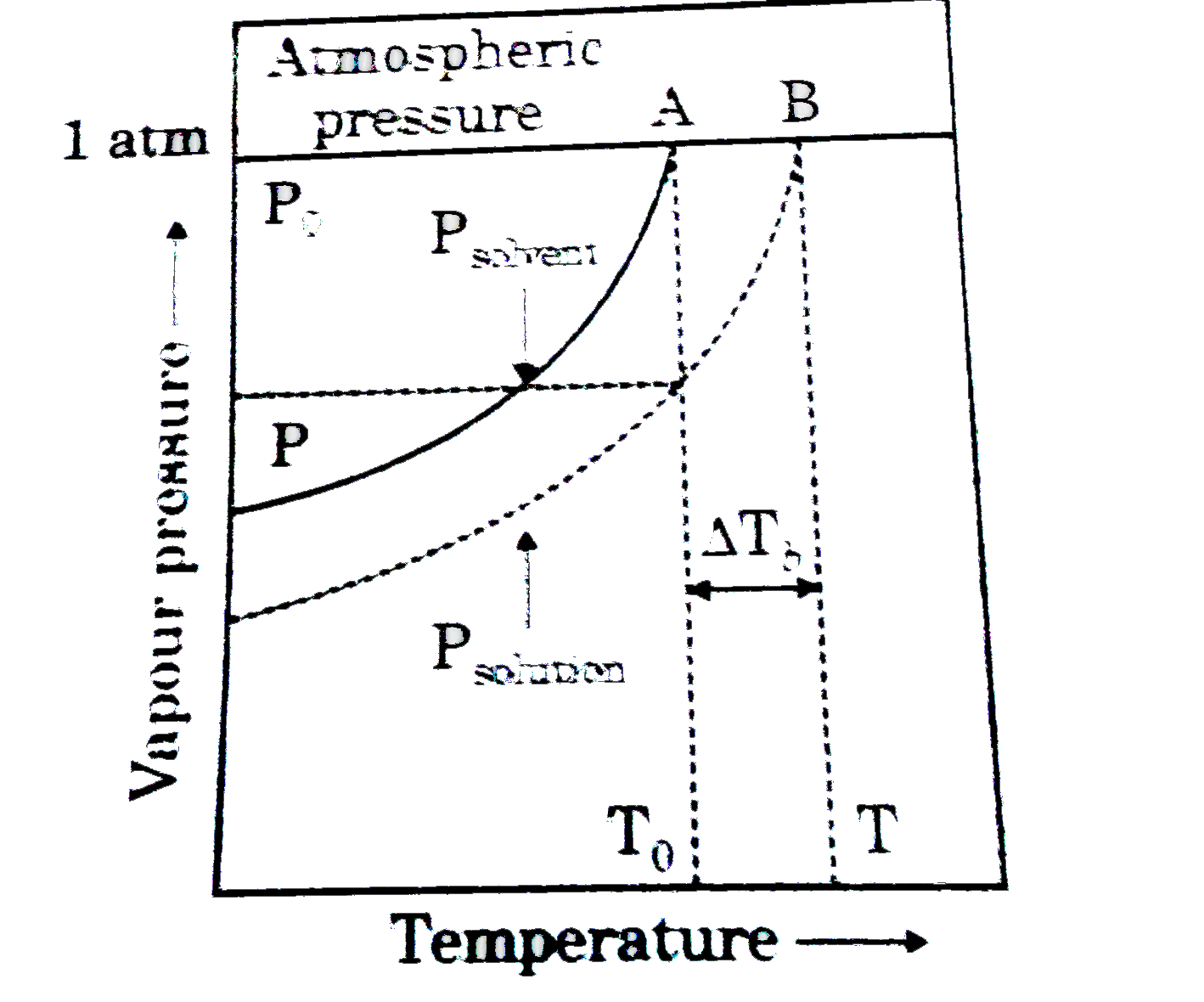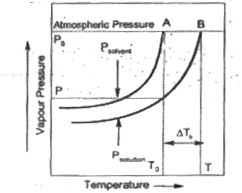Elevation in boiling point
Step by step video solution for Elevation in boiling point by Chemistry experts to help you in doubts & scoring excellent marks in Class 11 exams.
Updated on:21/07/2023Similar Questions
Give reasons for Elevation of boiling point of 1 M KCl solution is nearly double than that of 1 M sugar solution.
View SolutionConsider following figure and answer the questions at the end of it.
Figure explains elevation in boiling point when a non-volatile solute is added to a solvent.

Variation of vapour pressure with temperature and showing elevation in boiling point.
Given that ΔTb is the elevation in boiling point of the solvent in a solution of molality 'm' then Ltm→0(DηlTbm) is equal to
View Solution
Knowledge Check
Figure explains elevation in boiling point when a non-volatile solute is added to a solvent. Variation of vapour pressure with temperaure and elevation in boiling point is marked.

Given that ΔTb is the elevation in boiling point of the solvent in a solution of molarity m then limm→0(ΔTbm) is equal to:AKb (molal elevation constant)BLv (latent heat of vaporisation)CΔS (entropy change)Dx (mole fraction of solute)Figure explains elevation in boiling point when a non-volatile solute is added to a solvent. Variation of vapour pressure with temperaure and elevation in boiling point is marked.

Elevation in b.p of an aqueous urea solution is 0.52∘(Kb=0.52∘mol−1kg). Hence, mole fraction of urea in this solution is:A0.982B0.0567C0.943D0.018Consider following figure and answer the questions at the end of it. Figure explains elevation in boiling point when a non-volatile solute is added to a solvent.

Variation of vapour pressure with temperature and showing elevation in boiling point.
Given that ΔTb is the elevation in boiling point of the solvent in a solution of molality m then Ltm→0(ΔTbm) is equal toAKb (molal elevation constant)BLy (latent heat of vaporization)CΔS (entropy change)Dx (mole fraction of solute)
Elevation of boiling point is directly proportional to
View SolutionElevation of boiling point of 1 molar aqueous glucose solution (density=1.2g/ml) is
View SolutionFreezing point of an aqueous solution is −0.186∘C. Elevation of boiling point of the same solution is ……..if Kb=0.512Kmolality−1and Kf=1.86Kmolality−1 :
View SolutionThe correct relation between elevation of boiling point and mass of solute is
View SolutionThe correct relation between elevation of boiling point and mass of solute is
View Solution
